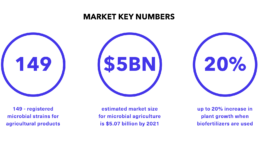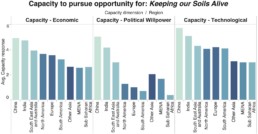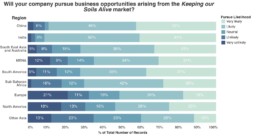The addition of special kinds of bacteria and fungi to soils has the ability to regenerate tired and depleted land, enabling it to become productive and arable again without the use of chemical fertilisers. Keeping soil alive with natural additives represents a big opportunity to reverse the trend of degrading soils and ensure nutrient-rich land.
Bacteria and fungi present an opportunity to reduce the need for chemical fertiliser and rejuvenate tired soils by increasing the content of plant-available nutrients. By introducing “good” bacteria and specific fungi into soil environments, these beneficial mushrooms and microbes act as probiotics of the plant world. Just as good bacteria promote good human health and well-being, beneficial microbes enhance plant vigour and productivity, and are thus a rapidly developing part of agricultural biotechnology.

Products and Services
Microbial additives have been used commercially in global agriculture for more than 120 years, but interest in this market are increasing. Microbial additives – also known as biofertilisers – can be broadly segmented into bacteria, fungi, and others (such as viruses and protozoa) and there are currently nearly 150 registered microbial strains for agricultural products on the market. Microbial products come in different forms, such as powders, liquids or as seed coating. Many of these products can be added to soils along with fertiliser and herbicides.
These products are designed to foster healthy soils that are rich in plant-available nutrients. They consist of microbes grown in the lab which are then subject to field tests. A number of microbial additives have been developed to increase the availability of nitrogen or phosphorus to plants in the soil, maximizing the efficient, sustainable use of nutrients.
Market Size and Demand Drivers
There is a strong business case for taking microbial additives to both small farms and large-scale agribusiness. Replenishing soil is no longer an eco-farming niche occupation, but a way to save billions of dollars. The growth potential in this opportunity space is promising, as the agricultural microbe market was valued at 2.17 billion USD in 2015. It is projected to grow at a compound annual growth rate (CAGR) of 15.14 percent from 2016 to 2021, to reach 5.07 billion USD by 2021.
Increasing global food demand is a major driver of this market for agriculture, including microbes. According to the Food and Agriculture Organization of the United Nations (FAO), global food production must increase by 70 percent between now and 2050 to feed the world’s growing population. The increased application of agrochemicals on crops to meet food demand will cause soil contamination and other environmental hazards. Therefore, the demand for microbial additives continues to rise.
Other important drivers in the market for agricultural microbes include the growth in the organic food industry, as well as policy initiatives aimed at limiting chemical fertilisers in food production. An example of government action is the EU Common Agricultural Policy, which promotes the use of bio-based products along with organic farming.
Survey Findings
Utilizing good bacteria and fungi to boost soil quality is a very popular market opportunity in the eyes of leaders in China and Europe. Survey respondents from South East Asia & Australia are more hesitant towards this market opportunity, but overall globally the response is positive.

From a gender perspective, the market opportunity appears especially popular among female respondents, whereas male respondents are less optimistic. For the regions with a high Human Development Index score, it is also very popular. The younger the respondent, the more positively he or she views this opportunity.
Business leaders consulted in our 2016 survey believe this market is held back by a lack of capacity. The opportunity receives an overall ranking of 8 out of 15 in terms of the current capacity to mature the market, with the MENA region rating it even lower. The surveyed leaders believe the economic capacity already exists to mature this market. However, their rankings indicate they do not believe the technological and political capacities are sufficient to do so thus far.

From a geographical perspective, leaders believe Europe will be a frontrunner in maturing this market. The economic and technological capacity is perceived to be ready to drive this market in Europe. Yet leaders in Europe do not believe the political capacity is sufficiently available in Europe to develop this market.
Civil society will be a key advocate for this market opportunity, according to the 2016 survey. In particular, the issue is high on the agenda of civil society in Europe.
This market was surveyed globally in 2016 by more than 5500 leaders from both the public and private sectors. The survey was conducted in collaboration with the research company YouGov. The survey results were originally published in the Global Opportunity Report 2017.

